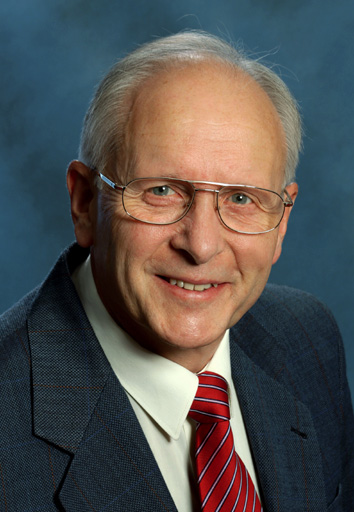Welcome to the homepage of Kurt Jung


Attempt to derive the Schrödinger equation from classical concepts thus providing a comprehensible explanation of wave-particle duality. The new interpretation of quantum mechanics is based on the assumption that all particles are accompanied by waves. Angular frequency ω and wave vector k of the wave are proportional to the total energy E = ħω and the momentum p = ħk of the particle. The information on the kinematics of a particle is transferred to the accompanying wave by the phase harmony condition, which leads to a permanent adjustment of the oscillations of particle and wave. As a consequence the spatial dependence of the wave mirrors the kinematics of the particle. The backward interaction of the wave to the particle's motion leads to the quantization of energies and angular momenta of bound states and to the asymptotic proportionality of wave intensity and probability density of the associated particle. The new interpretation of quantum mechanics is presented in the articles:
Can the Schrödinger wave function be associated with a concrete physical wave?
Ann. Fond. Louis de Broglie 34 (2009) 143-163
Does the Schrödinger wave function describe a real physical wave?
J. Phys.: Conf. Ser. 306 (2011) 012071
The new coexistence model presented above does not agree with Bohmian mechanics. The main differences are summarized in the article:
Is the de Broglie-Bohm interpretation of quantum mechanics really plausible?
J. Phys.: Conf. Ser. 442 (2013) 012060
The quantum mechanically predicted polarization correlations of entangled photons which have been confirmed by several independent experiments clearly violate Bell's inequality. Therefore it is generally assumed that quantum mechanics is not compatible with the basic physical principles of reality and locality. In the following letter it is shown that the polarization correlation can be derived from wave optical considerations without postulating a superluminal information transfer between the two observers. Obviously the violation of Bell's theorem does not prove any kind of non-local interaction. The principle of locality remains valid in the realm of quantum mechanics. However, the principle of reality has to be replaced by the less stringent principle of contextuality.
Violation of Bell's inequality: Must the Einstein locality really be abandoned?
J. Phys.: Conf. Ser. 880 (2017) 012065
Full determination of the kinematics of electron impact ionization processes
Measurement of the electron-electron correlation of rare gases and simple diatomic molecules
Determination of absolute triple differential cross sections of atomic hydrogen
Electron impact excitation of molecular vibrations and rotations
Investigations on Feshbach and shape resonances of simple molecules
Absolute cross sections on electron scattering processes with up to 8 meV energy resolution
Threshold phenomena in the electron scattering of hydrogen halides
Production of crystalline diamond films
Deposition of amorphous and microcristalline diamond-like
carbon films
Deposition of carbide films (WC, CrC, SiC) by magnetron sputtering
Deposition of cubic Boron nitride films in a plasma reactor
Characterization of
the internal binding structures for all produced hard thin films
Measurement of the charge transport in doted diamond films
Energy and mass selective investigations of particle fluxes in plasma beam sources
Anisotropy of the elasticity parallel and perpendicular to the surface
Variation of the elastic parameters with increasing thickness of the films
Dependence of the elastic parameters on the deposition conditions
Development of a long life diesel engine
Investigation of abrasive wear rates with the radio nuclide method
Investigation of chemical processes in halogen lamps
Deposition of non-sticking films on extruder screws for polyurethane
Lifetime enhancement of cutting dies and other tools by tungsten carbide films
Development of hard thin films with low glide ratio for dentures
Development of conducting ceramic tiles
Initiation of a start-up program in Kaiserslautern
Joint proprietor of a factory on plasma reactors
To reach me, please use my email adress:
jung@physik.uni-kl.de.
Otherwise, phone (+49-631/17681) or write: